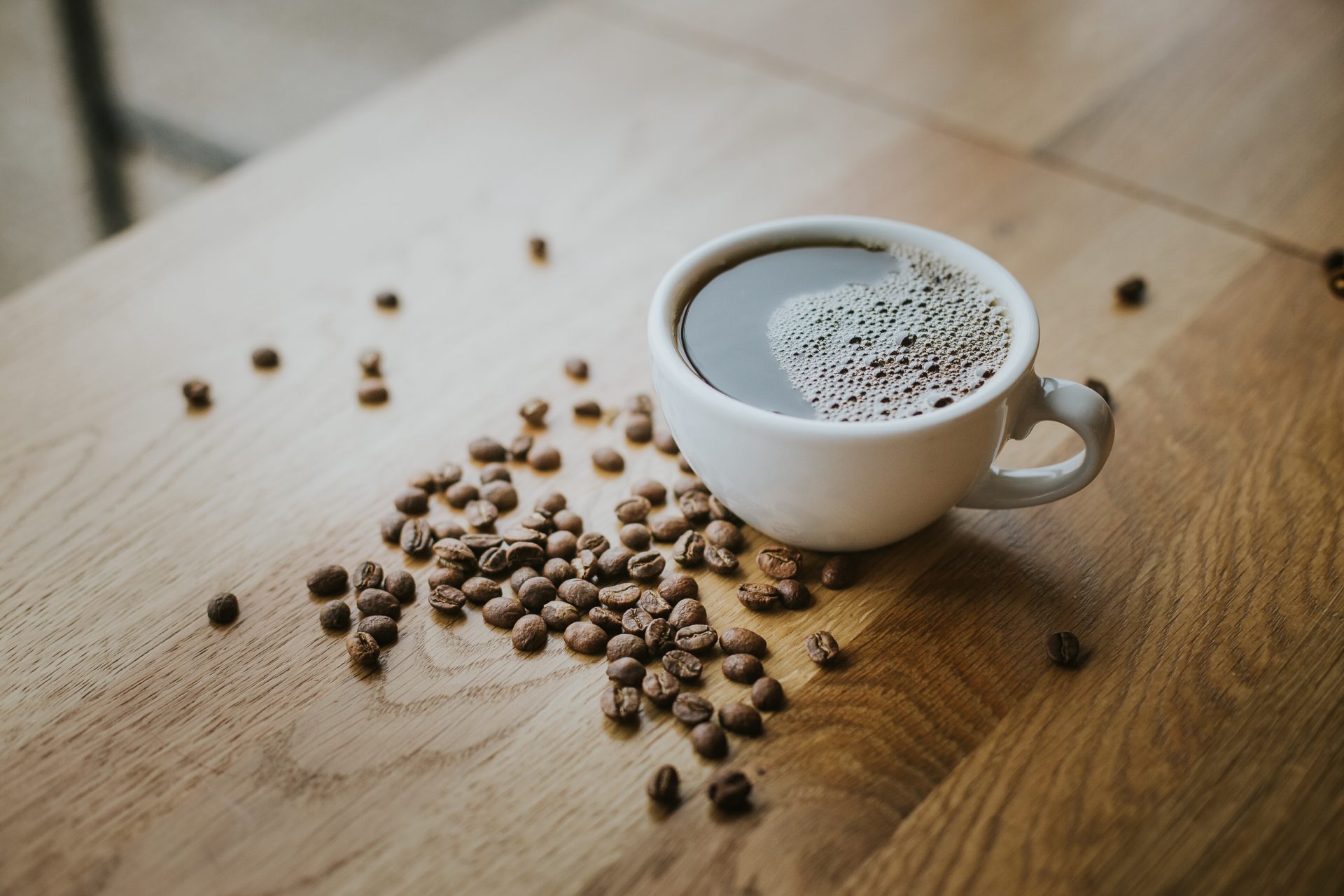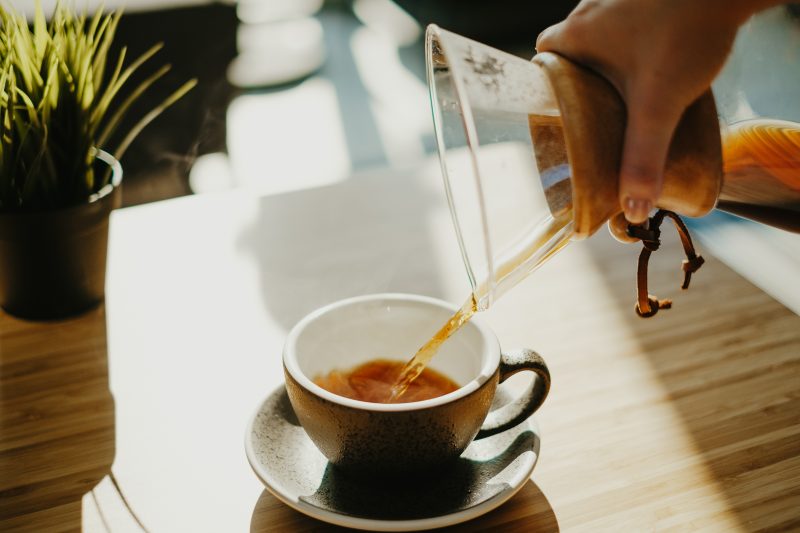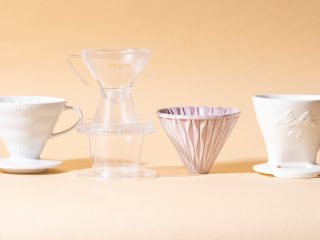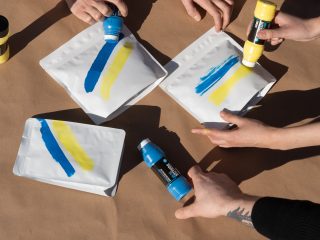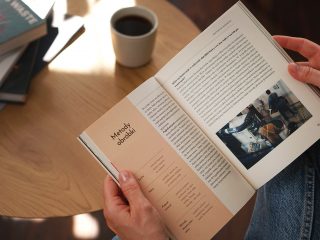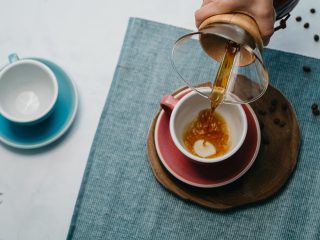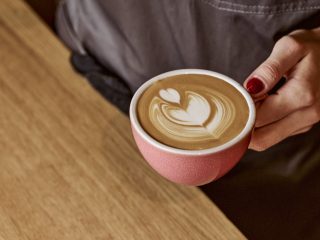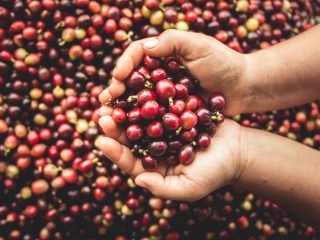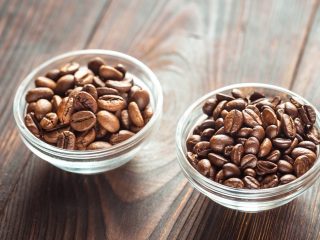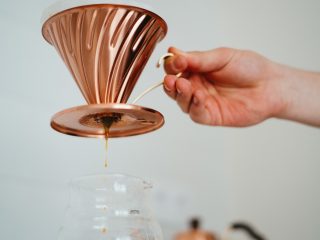How much caffeine is in coffee? It turns out that we can borrow the answer from psychologists who often give the same annoying answer to the most interesting questions: it depends.
First: in what coffee? Let’s take a small short cut and talk only about Arabica. Okay, it’s true that its annual world production amounts to over 80 millions of 60-kg bags! Among those several gigagrams of grounds, there are dozens of countries exporting hundreds of botanical varieties which will be then stored in a thousand different ways and roasted in tens of thousands of ways. Hundreds of thousands of premises will then serve theses coffees in a million ways, using various appliances, water, recipes… This diversity and chaos of variables leads me to claim the following: the question how much caffeine is in coffee? is just as precise as the question how many degrees Celsius are there in the Solar System in March?
People need generalisations. Bringing order to the chaotic world. Getting on with life amongst too much information and too many correlations. Sometimes, however, maybe due to the lack of interest, maybe due to the limited knowledge of a given subject, we generalise too much, which can be comical at times.
The present series of articles won’t answer the question of how much caffeine is in coffee. What it will do, however, is tell you what you can expect when ordering different coffees at different coffee shops; in this case, in Warsaw. It will demonstrate that this stimulating narcotic power is there (no worries, junkies!). It will also prove that Kenya coffee is no match for Kenya coffee! It will unveil diversity. And maybe even surprise you. At the very moment I am writing these words, 2/3 of research is still going on, so I am myself so excited that I keep wildly squirming in my seat.
I hope that reading this will give you, Dear Reader, a sensible point of reference. So generalise, but generalise wisely!
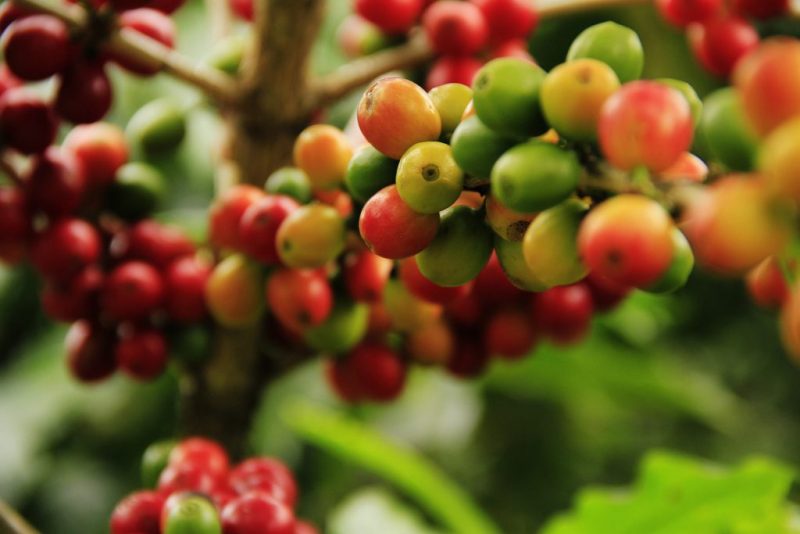
The rules are simple. I go to a coffee shop, I order coffee. I take a sample, put it into a proper container and send it as soon as possible to a secret research base. At the secret research base, secret people do quantitative research on caffeine which I publish after an analysis.
The method which reveals the secret of an everyday caffeine kick in a coffee cup is called chromatography. In a nutshell, it is about separating the ingredients of a given substance and then identifying their quantity or quality. If you are an inquisitive person, I suggest reading relevant literature to get more detailed information about the process. Search the internet. There are some relevant sources which can explain this matter to you better than any of my desperate attempts.
Part 1. Alternative brewing methods
Apart from generalisations, we also need points of reference in life. In our case, I suggest using the following points of reference with values expressed in milligrams in 100ml of a liquid or 100g of a solid.
- A popular energy drink with a red bull playing the main role: about 30.
- Popular orange lemonades made from the extract of yerba-mate: about 20.
- Cola/Pepsi: about 10.
- Milk chocolate: about 16-26 (depending on the brand)
- Dark chocolate: about 52-85 (depending on the brand)
This data shows that when we drink an energy drink, we consume about 75mg of caffeine. When we quench our thirst with a bottle of orange lemonade made from yerba-mate, we take in about 66mg of caffeine. A bar of chocolate, depending on the brand and type, contains from about 16mg to about 85mg of caffeine.
Overdosing this stimulant just a little bit is in my experience quite easy, but this depends on the person. Fortunately, to get seriously ill or even die you need greater quantities than those present in popular foods. If we believe what scientists say, with my 67kgs I would have to consume about 10g of this stimulant in order to kill myself. The recipe for this sweet suicide would involve eating 150 bars of dark chocolate at a time… Okay, let’s see what brews from roasted coffee beans have to do with all this!
Kenya, AeroPress, Forum
I am heading for Saviour’s Square, a place well known to every self-respecting coffee geek in the capital of Poland – Warsaw. I choose this place for obvious reasons – hi!!! Where do I find good coffee in Warsaw, help?!?! Best around downtown!! – this is the question asked for the 100th time on a popular Facebook coffee forum. I bet Geisha coffee grounds crushed with a rubber hammer against the EK43 grind that many will mention Forum.
And rightly so. It is, in my opinion, one of the best places in Warsaw for drinking coffee. Sławek recommends Kenya from Koppi. I agree straight away and wait for the brew from the AeroPress. I give it a moment to cool down and taste it, having taken a sample first. It is strong brewed, fullbodied, concentrated. A classic profile for this country of origin: sweet and juicy, many red fruits, effervescent acidity. We start a refractometer which shows the result. 1.58%. This is how much “coffee” there is in the cup I ordered. A quick calculation based on the ratios and we know the extraction degree. 22.45%. This is the mass of the coffee grounds which got rinsed out when Sławek was making my coffee. This is quite a lot. In theory, this is the upper limit for optimal brewing.
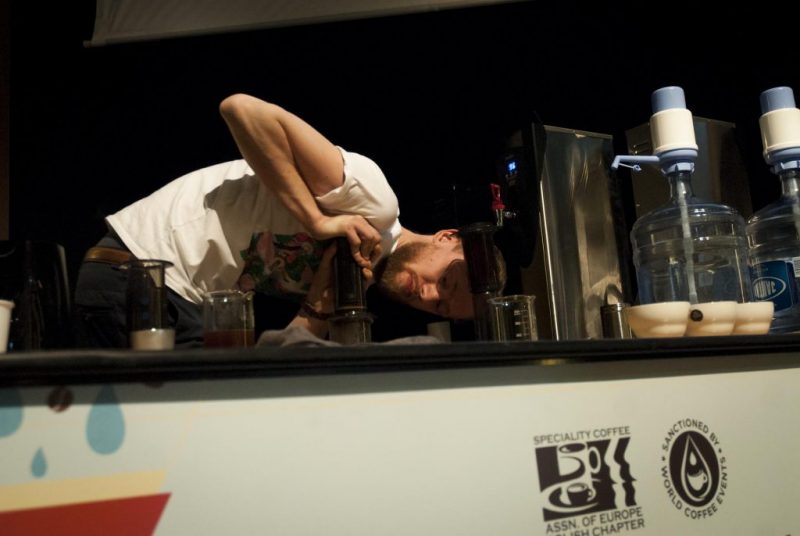
Sławek Saran, the owner of Forum Coffee Shop in Warsaw, during the Polish Brewers Cup Championship 2016 (which he won!) makes coffee in the AeroPress / Image by Marcin Rzońca
The results which will come in a few days will say: 96mg of caffeine in 100ml of liquid. So by drinking the full portion served by Sławek, I took almost 200mg of caffeine. Which is the equivalent of six and a half energy drinks under the banner of the red bull.
Kenya Kathakwa AA
roastery: Koppi
coffee shop: Forum
method: AeroPress
caffeine content : about 192mg in one serving
Kenya, Burundi, V60 and Kofi Brand
Let’s move on to Kofi Brand. My very first drip coffee in life was made from the grounds roasted by this Warsaw company. So I have a soft spot for it. It was the time when Miłosz was still behind the bar. He prepares two different coffees: Kenya and Burundi. Both are tasty, to say the least. Such as the ones I am always looking for: skilfully made, well-balanced. They are full-bodied, have a juicy flavour, much sweetness and a long aftertaste. What’s more, Miłosz’s skilful hand creates the following recurrence from the Hario v60:
- Kenya: 1.41% of the concentration / 21.15% of the mass extracted from the grounds
- Burundi: 1.42% of the concentration / 21.20% of the mass of coffee used
I feel I am going to reach my peak with the help of what is brewed in Sławek’s AeroPress. And so here we have: 250ml, multiplied by two. Half a litre of coffee Drinking all this would surely give me shakes alternating with apathy and headaches for the rest of the day. So I try only a quarter of each serving. More than ten days later I am surprised to see the result:
Kenya Kiunyu
roastery & coffee shop: Kofi Brand
method: Hario V60
caffeine content: 33 mg/100ml = 82.5mg in one serving
Burundi Nyabihanga
roastery & coffee shop: Kofi Brand
method: Hario V60
caffeine content: 23mg/100ml = 57.5mg in one serving
Almost three times less (Kenya) and over four times less (Burundi) compared to the pour-over from Forum! Had I drunk half a litre of coffee prepared by Miłosz, I would have taken 140mg of caffeine. 52g less than in one cup from the AeroPress made by Sławek.
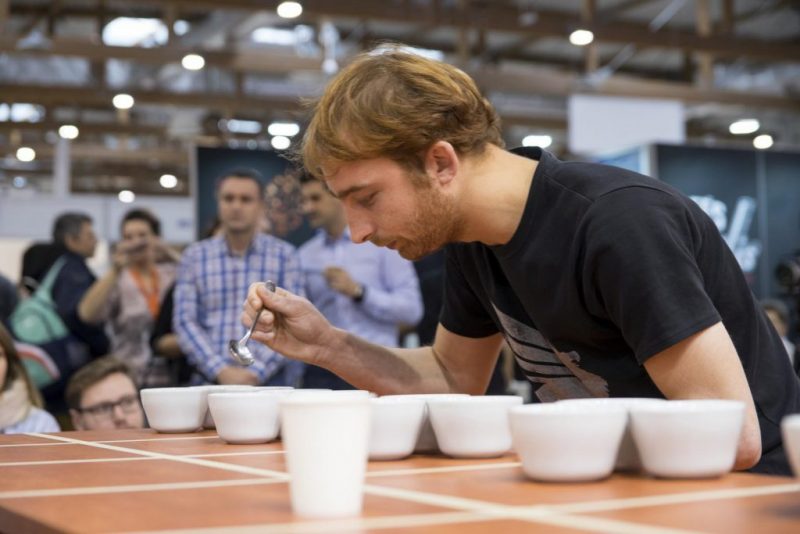
Why is it so? Extractions are similar, coffees well-brewed. So this is not the right track. Maybe the grounds themselves. The botanical variety, water, roast profile, preparation method. Something else? Probably yes. And most likely a synergy of those and other unknown variables. How can you NOT be fascinated with coffee?!
What about bad brews?
The coffees we have examined so far were prepared in an optimal way. This makes me wonder how much caffeine there is in a bad cup: I mean brews with a considerably lower and higher extraction level, in other words underextraction and overextraction. The taste of the former is characterised by acidity which is not counterbalanced by sweetness. It is also characterised by thin texture and emptiness. The taste of the latter is unpleasant, bitter, and stays in your mouth for a long time. It is a dry, sharp flavour. I am heading for Żoliborz (a Warsaw district), to Secret Life where I work at the time. I take the grounds comparable with previous ones. It’s Kenya Gatuya AA roasted by Audun Sorbotten. I brew three servings of pour-over coffee with the Kalita. Two opposite settings and an optimal one for comparison.
I achieve what I wanted. The extractions: 17.45%, 24.72% and 21.66%. The caffeine content turned out to be as follows: 77mg/100ml, 95mg/100ml and 102mg/100ml. What are the conclusions?
1. Even an extremely underextracted coffee, acid and void of taste produced a non-negligible effect of caffeine stimulation. In a standard 200ml serving you would consume 154mg of caffeine, which is the equivalent of two energy drinks or fifteen and a half cans of cola. It’s over two and a half times more than a tasty, sweet and full-bodied Burundi from Kofi.
2. Overextracted, bitter and unpleasant coffee contained less caffeine than its counterpart made from the same grounds but in an optimal way. The difference is quite minor, because it amounts to 14mg in a standard serving. Since we have only a few results, searching for correlations would be absurd. However, we can venture to dispel a certain myth. And namely, we have proved that a stronger, more concentrated, bitterer brew not necessarily contains more caffeine!
Good coffee is good!
We have now a certain, but still quite a small point of reference for how much caffeine is in coffee. As we see from these results, pour-over coffee made from speciality grade grounds can contain relatively much caffeine. Even the weakest brew was equivalent in this regard to half a litre of a popular energy drink with questionable health benefits and containing pyramids of white sugar. So if you need a boost of energy, drink good coffee! In moderation, of course.
As we saw, a single-serve coffee ordered at a coffee shop can give you over 200mg of caffeine, almost in one go. Well-brewed pour-over will not only make for an interesting and unique taste experience; it also has the power of waking up a drowsy freelancer or a young mum coping with a heavy workload.
Well, speaking of busy young mums…. Latte, cappuccino, flat white… What they all have in common, apart from milk, is espresso. But this is another story. Of course, on this point I want to apologise to all mums who drink only drip coffee. No offence! See you in the next part where we are going to talk about commercial grade coffee and coffee made the way our grandmas do!
—
sources: https://www.ptfarm.pl/pub/File/bromatologia_2009/bromatologia_3_2009/BR3%20s. %200776-0781.pdf and labels which I check

